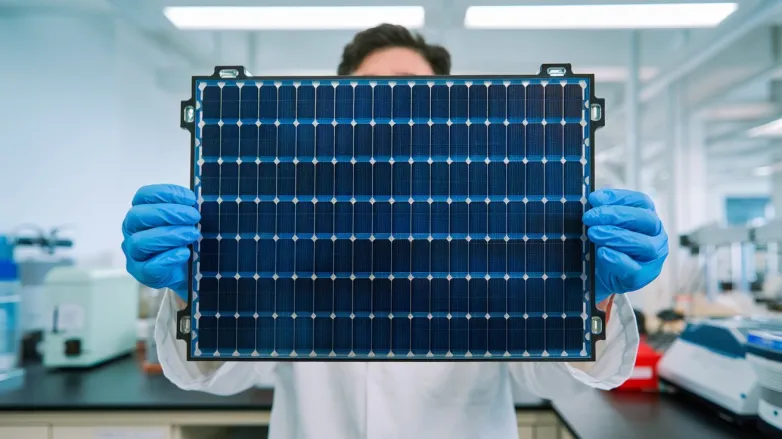LONGi Smashes Tandem Solar Record With 33 Percent Efficiency Leap
- LONGi’s new silicon-perovskite tandem cell hits 33 % efficiency, raising the bar for large-area photovoltaics and spotlighting the firm’s broader “Innovation + Collaboration” strategy.

In Shanghai this week, LONGi quietly rewrote the solar-power record books. Engineers at the Xi’an-based manufacturer unveiled a two-terminal silicon-perovskite tandem cell that converts 33 % of sunlight into electricity across a full-sized 260.9 cm² wafer. The figure, verified by the U.S. National Renewable Energy Laboratory, edges past every previous large-area benchmark and widens the gap between tandem designs and traditional single-junction silicon.
Why does three extra percentage points matter? Scale it across a gigawatt-class solar farm and the gain translates into hundreds of additional megawatt-hours each year—electricity that can trim costs for homeowners or keep an industrial line humming without burning more fossil fuel. LONGi’s R&D team credits the milestone to fresh material blends and a re-engineered cell stack that reduces voltage loss at the perovskite–silicon interface.
The company did not stop at cells. At the same SNEC trade-fair booth, LONGi’s back-contact (BC) module prototype topped 26 % efficiency, nudging the practical ceiling for single-junction panels higher yet. Taken together, the twin announcements hint at a future in which rooftop arrays squeeze ever more power out of every square metre while factories crank out the hardware at familiar speeds.
Founder-turned-chief-technology-officer Li Zhenguo used the occasion to map LONGi’s next quarter-century. “Photovoltaics are ready to become the backbone of global energy,” he told visitors, “but storage and grid integration still hold us back. Progress demands open-ended cooperation.” The firm’s new “Innovation + Collaboration” mantra invites universities, suppliers and even rivals to share ideas on next-gen cell architectures, perovskite stability and hydrogen production.
Sceptics might note that lab achievements do not always translate directly to rooftops. Yet LONGi’s track record—commercialising PERC, then pushing heterojunction and now BC modules—suggests it can bridge the gap from demo line to mass production. If that happens, the 33 % headline could become tomorrow’s industry baseline, driving solar electricity even closer to parity with the cheapest fossil fuels and delivering tangible climate benefits along the way.
For now, the race is on: competitors will scramble to catch up, and policymakers will watch closely as higher-efficiency panels promise faster returns on clean-energy subsidies. The sun, of course, will keep on shining—now at a record-breaking 33 % yield.
Also read

